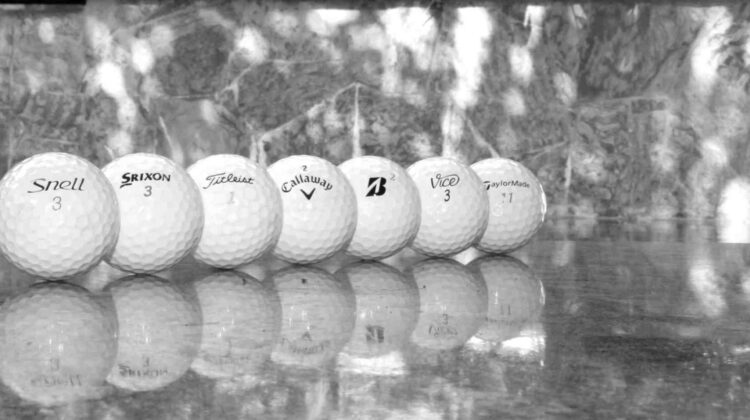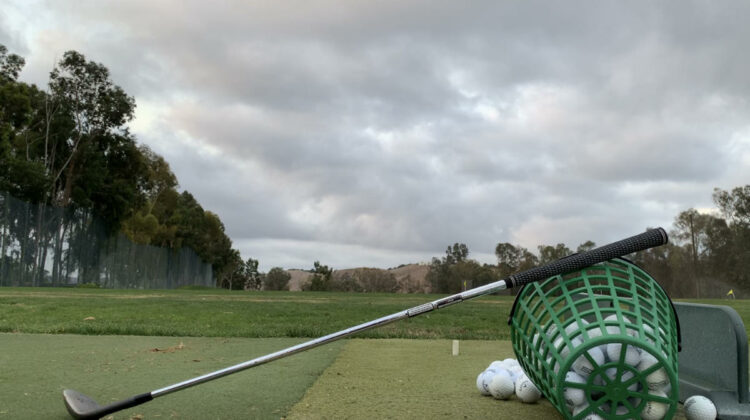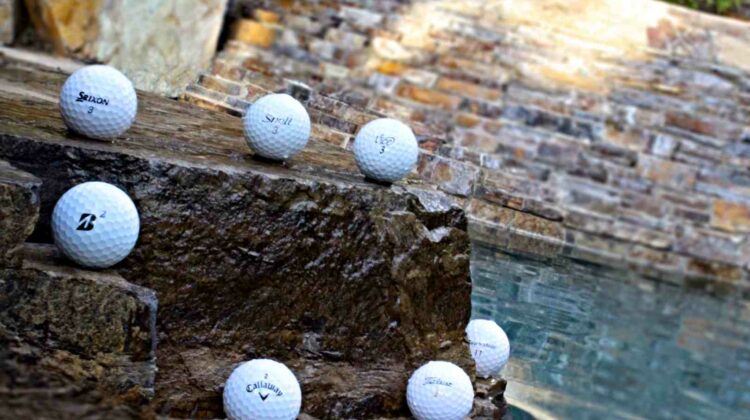
There is a long list of the worst golf balls for beginners. The decision is all-enveloping, confusing, and only seems to get harder as more and more companies make high-quality golf balls. (See our full guide of golf ball options for your game.)
Finding the right golf ball is a complex process.
But that doesn’t mean you just give up and play whatever ball you find in the woods.
If anything, the fact that it’s hard is even more reason why you should dedicate the time to do it right. (See our process to finding what golf ball you should play.)
I promise you will reap the benefit with lower scores.
Once you embark on this process, though, there is good news!
Since competition has been so rampant in the golf ball space lately, there will be many options that can improve your game. Especially if you are brand agnostic.
You only have to find one of them.
These are 5 things to remember the next time you ask yourself, “What golf ball should I use?”
>> Related: Best Titleist Golf Balls

1. Never Worry About Feel
We all want our golf ball to feel soft, but does it actually help our game?
Feel good, play good.
Right?
So if our golf ball feels good, it has to help our mental game, which inevitably makes us feel more confident and helps us play better.
Right?
There is no mistaking that compression has an impact on golf ball performance.
Unfortunately, it’s probably not the performance you think.
The trade-off for buttery soft feel is usually less-than-desirable spin.
For some, this downshift in spin can help us tighten our shot dispersion and find more fairways.
However, the dramatic loss in spin plays an ever bigger roll in stopping the ball around the green.
For the fractional gains you might get in hitting fairways, lowering spinning balls only have about one-third of the bite on mid-range pitch shots. One third!
There is no way you are gaining that many fairways hit from the same ball.
Softer balls also don’t travel as far off the tee.
More on this in a second, but for now, everyone swings fast enough to compress any golf ball.
And firmer balls travel farther. Period.
I know it sounds crazy, but you will get used to the feel of a firmer ball.
Softer will always feel better, but I’ll take better performance every day of the week and twice on Sunday.
2. Never Choose a Ball Based on Swing Speed
Marketers are good at their job. They have to be, or we wouldn’t buy anything and they wouldn’t have jobs.
Unfortunately, some of them are so good at their jobs that they have created a false reality.
That falsity comes by way of making us believe that swing speed is somehow tied to the ball you should play.
True, there are variabilities between balls depending on how fast you swing, but they’re not as big as you think.
If a ball spins when you swing 120 mph, it’s going to spin when you swing 90.
And no matter what someone says to you, you swing hard enough to compress any golf ball.
A firm, long-carrying golf ball like the Pro V1x Left Dash is going to be one of the longest balls out there.
It doesn’t matter if you have the fastest swing on the PGA Tour or you have the slowest swing at the weekend muni.
And when we have a 50-yard pitch shot, we all swing the same speed anyway.
3. Never Test Golf Balls With Driver
When choosing a golf ball, drivers don’t matter.
I’ll repeat that in case you thought there was a typo.
Drivers don’t matter.
At least not when choosing a golf ball.
The best strategy for anyone with a driver in their hand is to hit it as far as you can. With reasonable accuracy. And go find it so you can hit it again.
You are never trying to score with a driver, you are merely trying to set yourself up to score.
Scoring happens with the short clubs.
Can you get up and down from this tricky downhill chip shot?
Can you stick it close with this short-sided wedge shot?
That’s where scoring happens.
And that’s what you should be choosing your ball based on.
With driver customization these days, it’s far easier to fit your driver to a golf ball than to change the rest of your game to fit the driver.
4. Never Play a Ball Because Your Friend Plays it
Does your friend beat you by 5 strokes with their new Pro V1s?
Cool…
Your friend doesn’t swing like you.
Doesn’t swing at the same speed as you.
Doesn’t produce the same amount of spin as you.
And doesn’t care what ball you play.
So why should you care what ball they play?
You are you, they are them.
Play your ball for your game.
5. Never Use Range Balls

If you ask an expert, “What golf ball should I use?”
They will probably respond back with a question probing for data about your current swing metrics.
When you respond, never give them any ball flight numbers that came from range balls.
Even if you are using brand-new range balls, the performance characteristics are way too different from quality golf balls.
They don’t spin the right amount.
They don’t have proper layers.
The quality control is more about quantity than quality.
And that’s only if you’re using brand-new range balls. Now consider the hot mess of worn-down range warriors that come out of the range machine.
If you’re going to use data to drive your ball decision, make sure it came from hitting real golf balls.
6. Never Play Whatever is in Your Golf Bag
Hand up. Been there, done that.
Safe to say we all have.
Especially when that new sleeve of Pro V1s is already in the woods by the 4th hole.
But don’t do it…
Don’t reach in that bag like it’s a bingo cage filled with ping pong balls.
If you are truly serious about lowering your scores, playing the same ball is crucial.
“But I’m not good enough for it to make a difference.”
False!
You are good enough.
I would argue it’s actually more important for us Joe Nobodies to play a consistent ball because we aren’t as good.
The best players in the world can adjust to different characteristics in a golf ball because they’re the best players in the world.
We are not.
It’s vital that our golf ball performs the way we need it to because we aren’t good enough to adjust our game.
Choose a ball and go with it!
Worst Golf Balls for Beginners: Final Thoughts

All this begs the question, how should you choose the right golf ball?
You should always start with your short game.
And when you’re done with that, check out your short game.
If that wasn’t enough, test out your short game again.
Low handicaps are earned with wedges in your hand.
Hit it as close as you can, as often as you can.
We are not PGA Tour players, but I think this stat proves a valuable point:
The worst make percentage from 3 feet, is still better than the highest make percentage from 4 feet.
What does that mean?
Stop thinking you need to get better with the putter.
Hitting it closer will help more than putting it better.
What can help you hit it closer?
Playing the right golf ball.
No ifs ands or putts.
A ball that will roll out when you want it to and check when you don’t will dramatically take strokes off your game.
DRAMATICALLY!
See our full guide on all the steps to choosing the right golf ball.



Leave a Reply